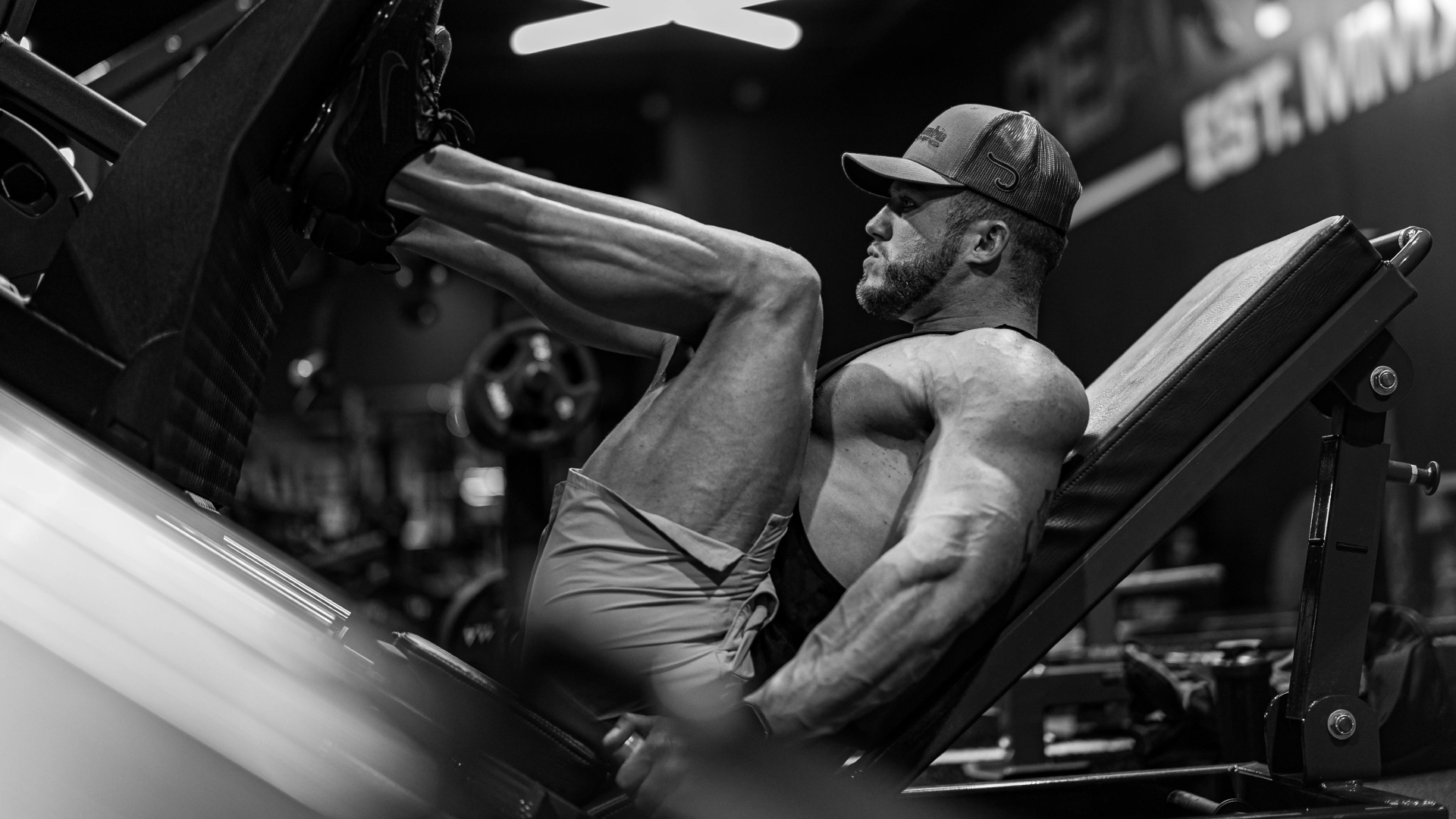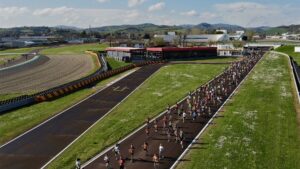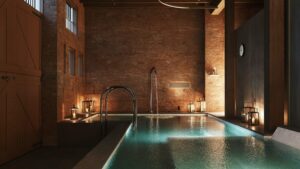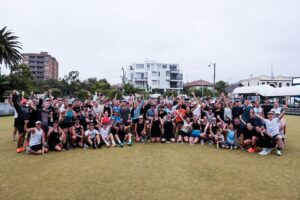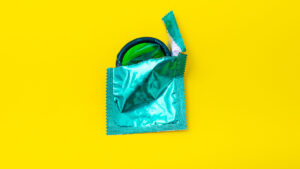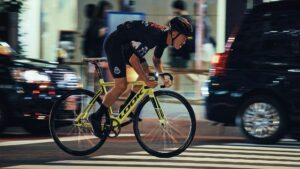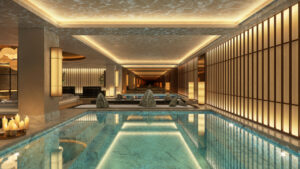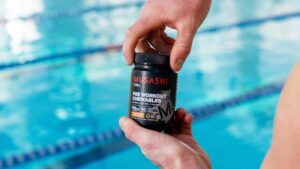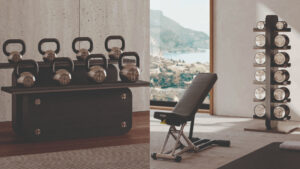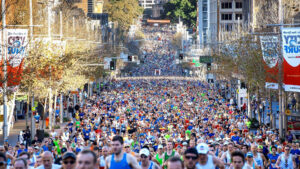Never skip leg day, unless you want to look like Johnny Drama. Training legs isn’t just about packing on muscle on your legs to become Quadzilla. It’s also about building stability (1) and balanced fitness as you progress.
Think about it: your legs carry the weight of your entire body. Your legs are also, cumulatively, the body’s largest muscle group. So if you want to pack on more muscle mass, a solid leg workout isn’t something you can ignore.
Training legs with compound exercises such as weighted squats helps you build muscle in your upper body too, including your arms and core which are both critical in any balanced workout routine. Several gruelling training programs such as the Smolov Cycle exist, in which athletes train nothing but their legs and still end up with impressive strength and muscle gains in their upper bodies.
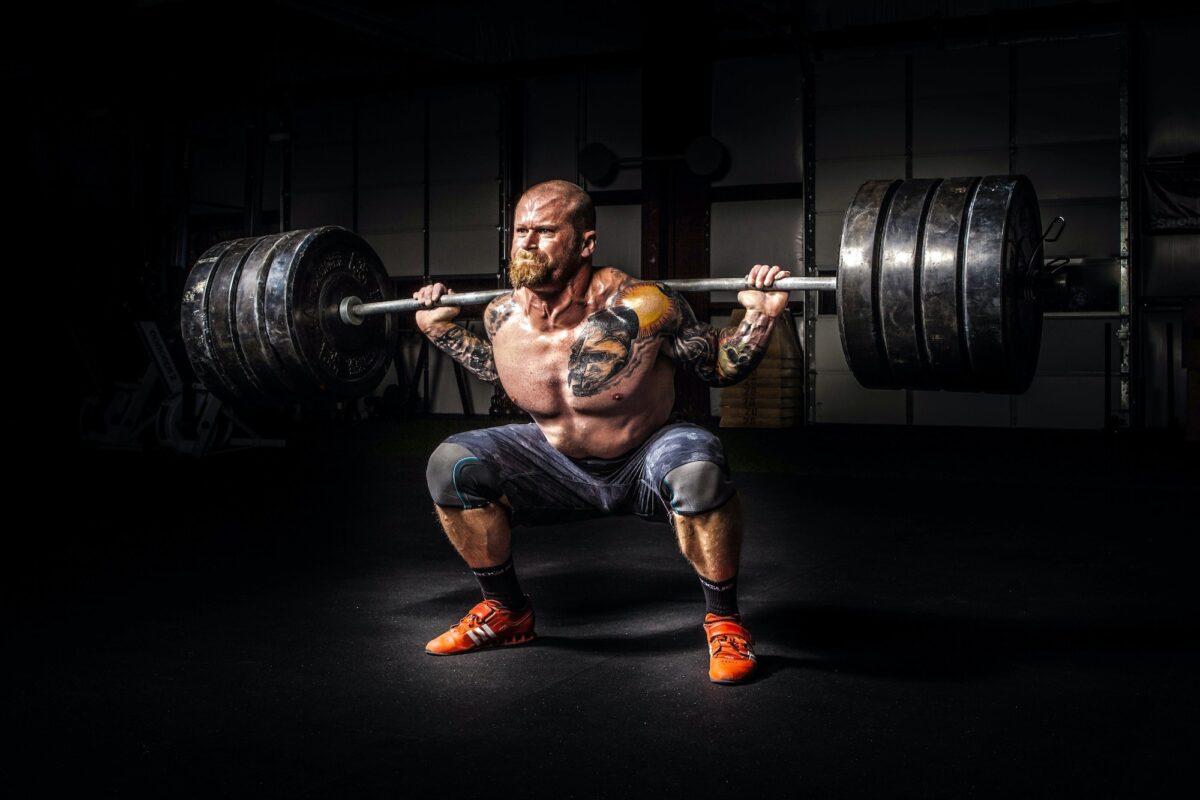
Without further ado, we present a selection of the 15 best leg workouts you can perform at the gym and home. Consider it the gospel of leg workouts with pretty much everything there is to know about building powerful legs to improve your fitness, prevent injury, and have you in the best shape of your life.
Jump To:
- Why It’s Important To Train Your Legs
- How To Get Bigger Legs
- The 15 Best Leg Exercises For Strength & Size
- 1. Hack Squats
- 2. Back Squats
- 3. Bulgarian Split Squats
- 4. Front Squats
- 5. Dumbbell Step Ups
- 6. Single-Leg Cable Hip Extension
- 7. Machine Hamstring Curls
- 8. Leg Press
- 9. Romanian Deadlift
- 10. Machine Leg Extensions
- 11. Good Mornings
- 12. Bodyweight Calf Raises
- 13. Goblet Squat
- 14. Walking Lunges
- 15. Sitting Calf Raises
- Final Thoughts
- The Boss Hunting Fitness Reviewer — Jono Castano, Certificate IV in Fitness, Precision Nutrition Level 1
What Are The Leg Muscles
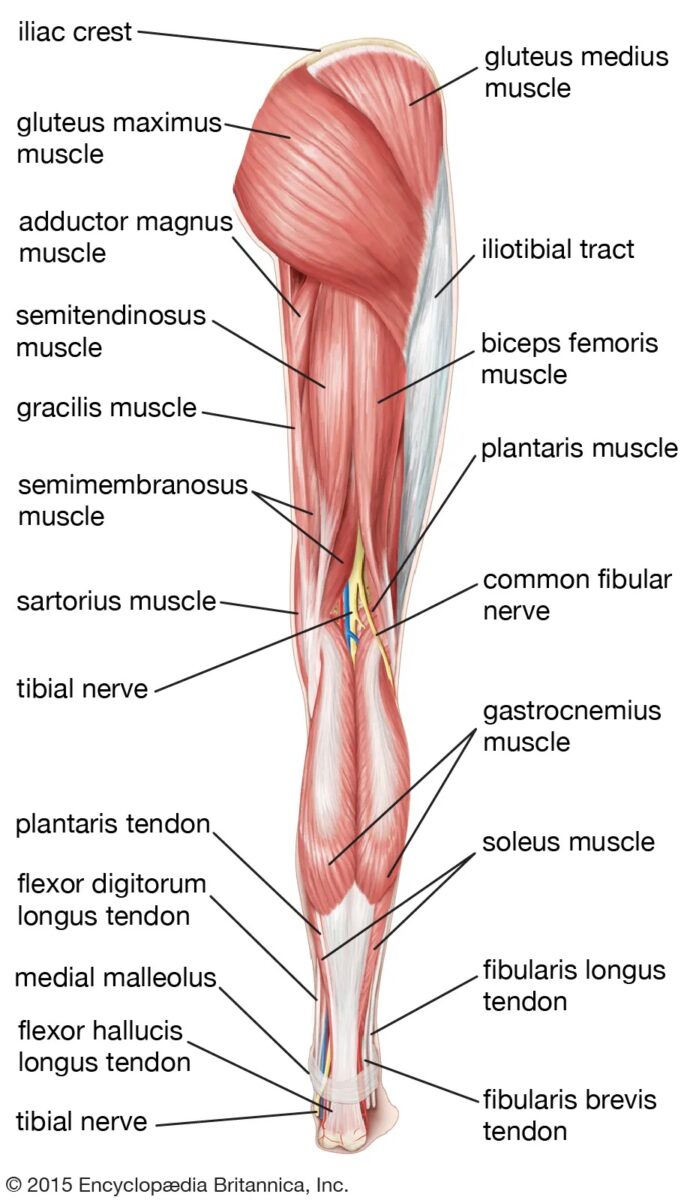
Gluteus Maximus
While many muscles make up each of your legs, let’s take a look at the larger muscles starting with the Gluteus Maximus, or buttock. The Gluteus Maximus is the largest of the three gluteal muscles (in fact, it’s the largest and heaviest muscle in the body) and is responsible for moving your leg at the hip, allowing you to stand, walk, run, and much more.
Quadriceps Femoris
The Quadriceps Femoris, better known as your quad, is a group of muscles in your thigh that extend your leg into a straight position and are also critical for running, standing and many of the movements we do every day.
Adductors
Another group of muscles that make up your thigh, the adductors are located on the inner side of your thigh and allow you to bring your legs together.
Hamstrings
Your hamstrings are made up of three muscles called the biceps femoris, semimembranosus, and semitendinosus, which are located at the back of your upper leg and are responsible for bending your leg backwards.
Tibialis anterior
Located at the front of your lower leg, the tibialis anterior is effectively your shin muscle and allows you to flex your foot upwards, pulling your toes towards your knee.
Gastrocnemius & Soleus
The bane of many gym-goers, the gastrocnemius and soleus are the muscles that make up your calf, with the gastrocnemius externally visible as the upside-down heart-shaped calf muscle while the soleus sits beneath.
Why It’s Important To Train Your Legs
Your legs are the foundation for almost every movement that you do, both in and out of the gym. Having strong legs won’t just help you squat heavy or improve your physique, they’re critical for everything from picking up your child to carrying the supermarket shopping.
From a more athletic perspective, a well-trained set of legs will improve your strength and endurance, agility, balance, explosiveness, and much more, making legs arguably the most important area of your body to train. “Never skip leg day,” should be every gym-goer’s mantra.
How To Get Bigger Legs
Two leg workouts a week with 5 or 6 different exercises in each session is the optimal frequency (3). Remember that a balanced workout for the entire body is the goal, which means your upper body will need attention as well.
There are, of course, exceptions to the rule. If you’re training for a specific fitness goal, you may increase or decrease your frequency. For instance, if the objective is to increase your maximum squat, you might want to follow a program that trains your legs more often.
Another thing to consider when you’re writing down your training program and schedule is the concept of Tempo Training. This method relates to the pace at which you move through the reps of your set, with slower and more controlled movements assisting with improved muscular hypertrophy, while quicker sets will improve the elastic components of your musculoskeletal system.
How To Warm Up & Cool Down For A Leg Workout
Your body will likely be cold and stiff from a whole day of sitting at a desk, and leg workouts can be intense. This is why warming up and cooling down your body before and after exercise helps prevent injury (2) and ensures your body performs as it should.
Jumping jacks, leg swings, bodyweight squats, and lunges are all great warm-up exercises. Whatever you pick, you’re essentially aiming to do two things:
- Increasing your heart rate, and
- Stretching your muscles
By the same logic, cooling-down exercises will help your muscles recover after a workout. Recovery involves extending every lower-body muscle group with lunges, stretches, and straddles.
The 15 Best Leg Exercises For Strength & Size
Below is a list of the 15 best leg workouts along with detailed guides on how to perform each one. We’ve curated a list that includes a good mix of exercises that can be performed using machines, free weights, and bodyweight exercises.
1. Hack Squats
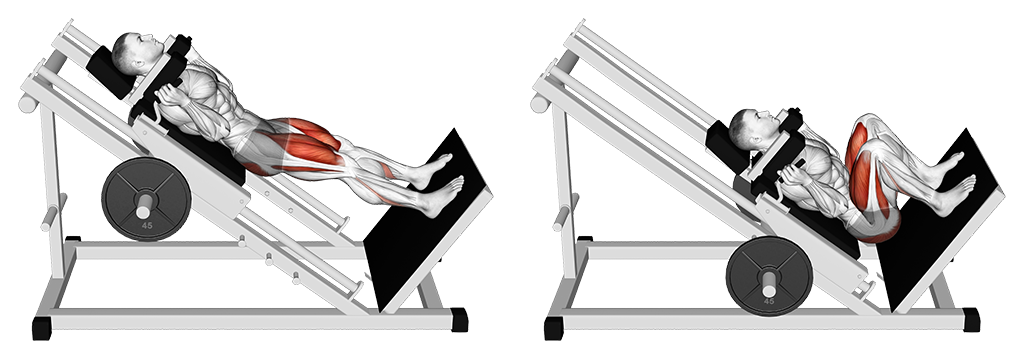
- Difficulty: Beginner
- Target muscles: Glutes, quads, hamstrings
- Equipment needed: Hack squat machine
- Sets: 2-3
- Reps: 10-12
- Rest: 60 seconds
Benefits: The hack squat offers the benefits of a classic weighted squat without the added back strain. The machine isolates your quads and allows you to apply more pressure on them in comparison to a classic weighted squat where the back, abdomen the core are also engaged.
Instructions:
- Load the machine with weights.
- Stand with your feet shoulder-width apart.
- Lie on your back and grip the handlebars.
- Inhale as you bend your knees until they are parallel to the floor.
- Exhale as you straighten your legs and return to a standing position.
- To keep the weight off your spine and target your quads, ensure your back remains on the backrest.
Pro Tip: Move your feet closer to maximise squat depth in and get more out of the exercise.
2. Back Squats
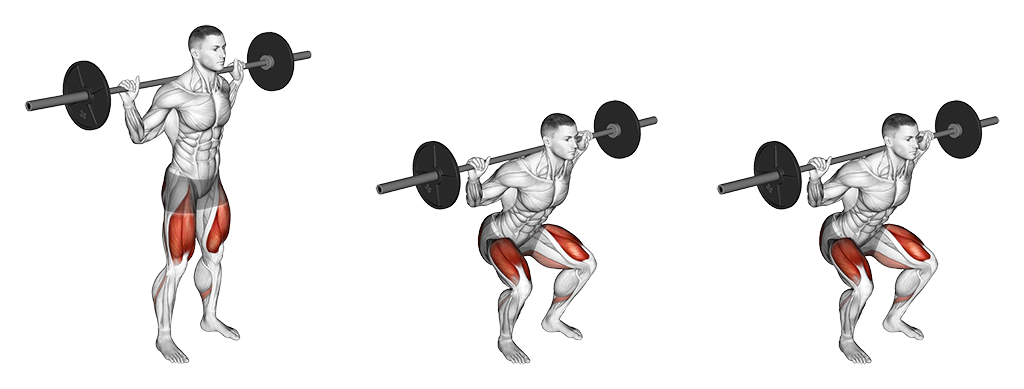
- Difficulty: Beginner
- Target muscles: Glutes, quads, hamstrings, core
- Equipment needed: Barbell
- Sets: 4-5
- Reps: 6-8
- Rest: 60 seconds
Benefits: The squat is known as the king of the exercises and for good reason. It pretty much works every muscle in your body from the neck downwards with your quads, glutes, core, and back doing the heavy lifting (or so to speak). There is even evidence to suggest that regularly performing high-intensity barbell squats (6) increases both testosterone and human growth hormone (HGH). Which, in short, means increased muscle mass all over your body.
Instructions:
- Load the barbell with weights (it should be at shoulder height).
- Step up to the rack and position your shoulders under the bar.
- With your feet hip-width apart, grip the bar just beyond shoulder-width.
- Lift the bar and take one or two steps away from the rack.
- Inhale as you bend your knees and descend until your hips are lower than your knees.
- Exhale as you extend your hips and knees, returning to a standing position (this is a single rep).
Pro Tip: If you’re using heavy weights near the limit of your capacity, wear a powerlifting belt to avoid the risk of a hernia or other injury.
3. Bulgarian Split Squats
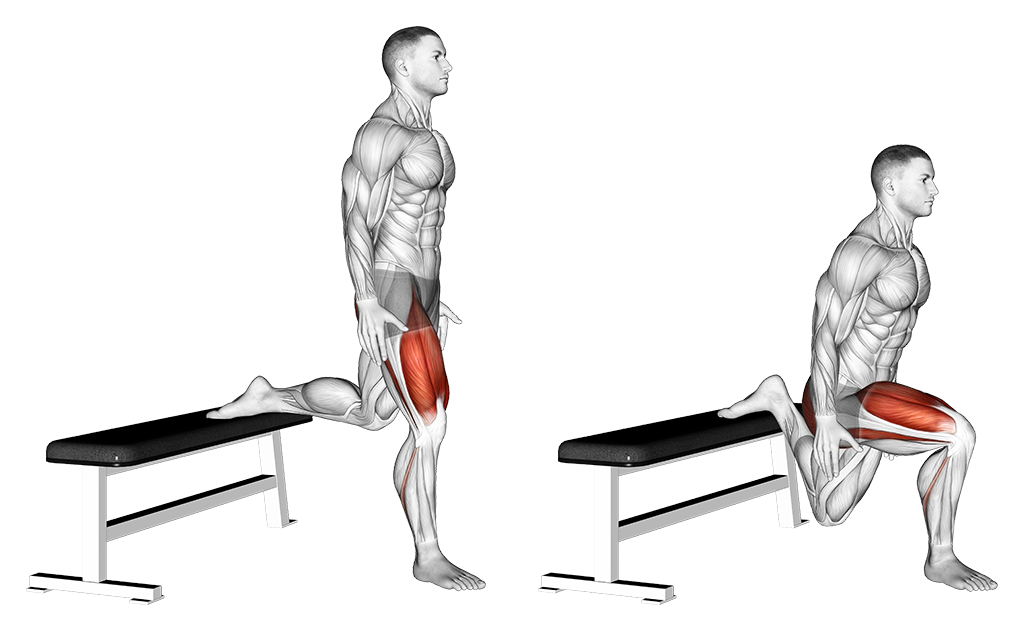
- Difficulty: Beginner
- Target muscles: Glutes, quads, hamstrings
- Equipment needed: Bench
- Sets: 2 per leg
- Reps: 6-8
- Rest: 60 seconds
Benefits: The Bulgarian is a one-legged squat with the lower back leg in an elevated position. As one of the lower legs is resting on a bench or chair, each leg gets a serious workout with your body weight. This exercise targets the quads, but the muscles of the back leg also get some love. It’s a great lower-body exercise at the start of your workout, as it activates the entire leg.
Back in the 60s and 70s, athletes from the Soviet bloc were known for experimenting with brutal training regimes (4) that pushed the human body to its limits. The Bulgarian split squat is a relic of that very era of iron-willed iron-pumping that established Russian and East European dominance in strength sports.
Instructions:
- Stand a metre or so from a bench or a chair, feet hip-width apart.
- Push your shoulders back and look straight ahead.
- Bend one leg at the knee, rotating the lower leg behind you and resting it on the bench or chair; at this point, you should be in a lunge position with one leg resting behind.
- Now bend your front leg as you inhale and descend as far down as you can with the front leg carrying the full load.
- Focus on your balance, as it’s easy to lose it at this stage.
- Return to a standing position as you exhale.
- Switch legs and repeat.
Pro Tip: To increase difficulty, hold a dumbbell in each hand as you perform this exercise.
4. Front Squats
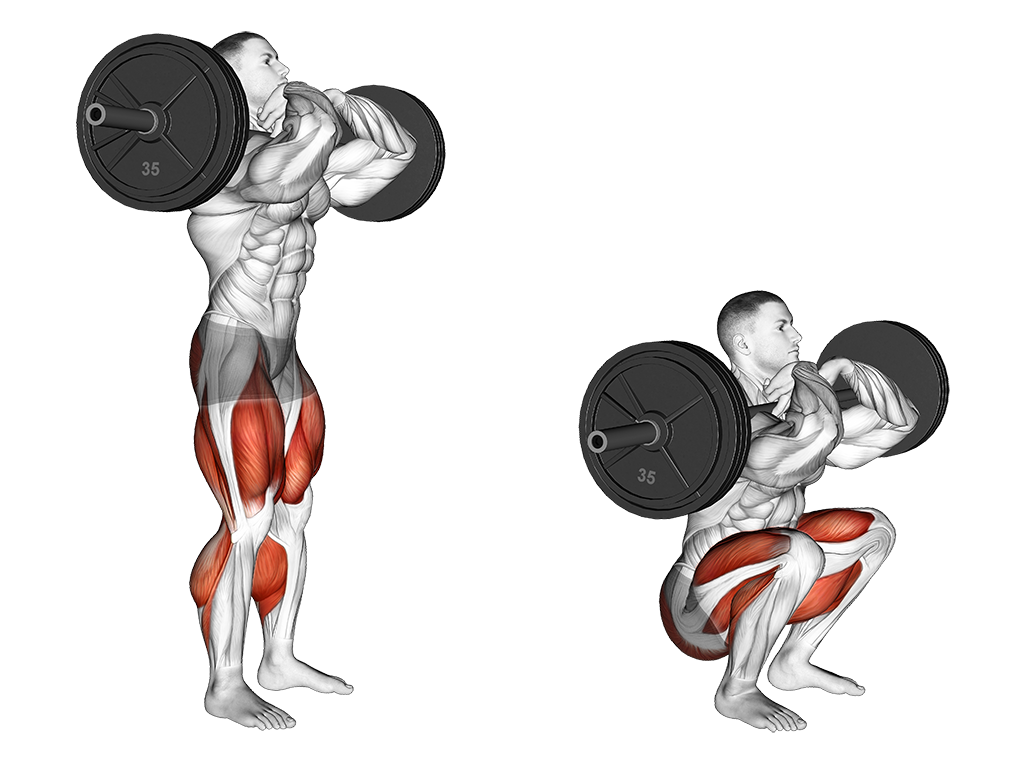
- Difficulty: Beginner
- Target muscles: Glutes, quads, hamstrings, calves
- Equipment needed: Bench
- Sets: 3-5
- Reps: 6-12
- Rest: 60 seconds
Benefits: At first glance, the front squat may appear similar to the back squat, except the weight is carried in front of your chest. However, the two exercises work for very different muscle groups. The front squat works your anterior chain whereas the back squat works the posterior chain of muscles. This means that the front squat puts more stress on the quads and the core whereas the back squat puts more stress on the glutes and the back.
Instructions:
- Load your barbell at around shoulder height on a rack with weights.
- Grip the bar with an overhand grip at shoulder width with your upper arms parallel to the floor.
- Lift the bar off the rack and rest it against your chest.
- Step away from the rack.
- Inhale as you bend your knees and descend in a straight line to the lowest position without bending your torso.
- Exhale as you return to a standing position.
Pro Tip: You can do an advanced variation of the front squat with your arms crossed. This might be easier if you have well-developed chest muscles.
5. Dumbbell Step Ups
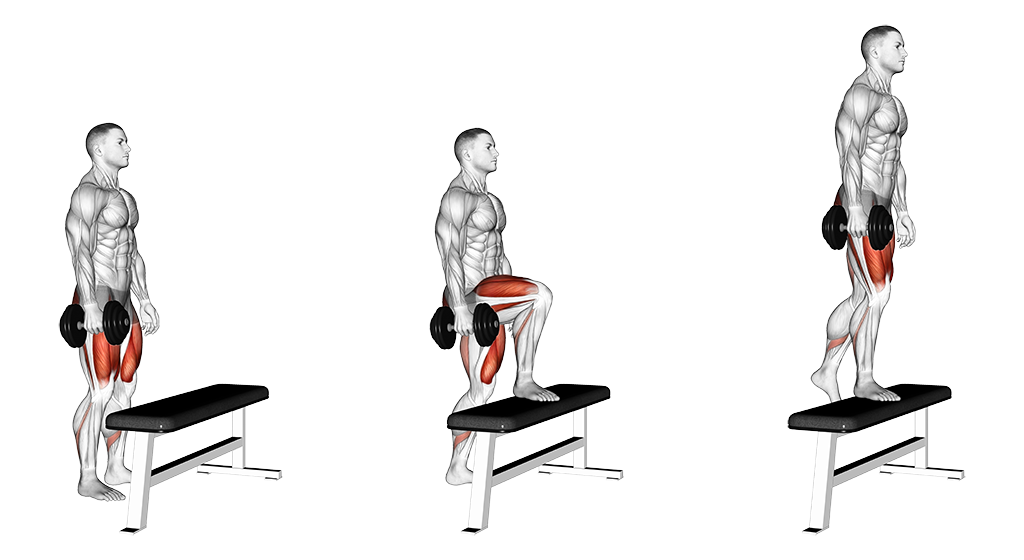
- Difficulty: Beginner
- Target muscles: Glutes, quads, hamstrings
- Equipment needed: Bench, dumbbells
- Sets: 2-4
- Reps: 10-12
- Rest: 60 seconds
Benefits: The dumbbell step-up is a simple cyclical movement with free weights that builds strength, stability, and balance. It’s also easy on your knees and back. This is not a heavy-lifting exercise. The dumbbell step-up trains your glutes, quads, hamstrings, hip adductors, and calves, giving you a great overall workout for your lower body. The dumbbell step-up involves climbing onto a knee-high bench with legs alternating while holding a dumbbell in each hand.
Instructions:
- Stand around 30 centimetres away from a knee-high bench or box with a dumbbell in each hand.
- Put one leg on the bench, keeping your back straight.
- Climb onto the bench and straighten your right leg.
- Climb back down from the bench with your right foot followed by the left, back to your original starting position.
- Repeat with your other leg.
Pro Tip: The secret to doing this exercise right is to maintain a proper upright posture with a straight spine, and avoid bending or leaning forward.
6. Single-Leg Cable Hip Extension
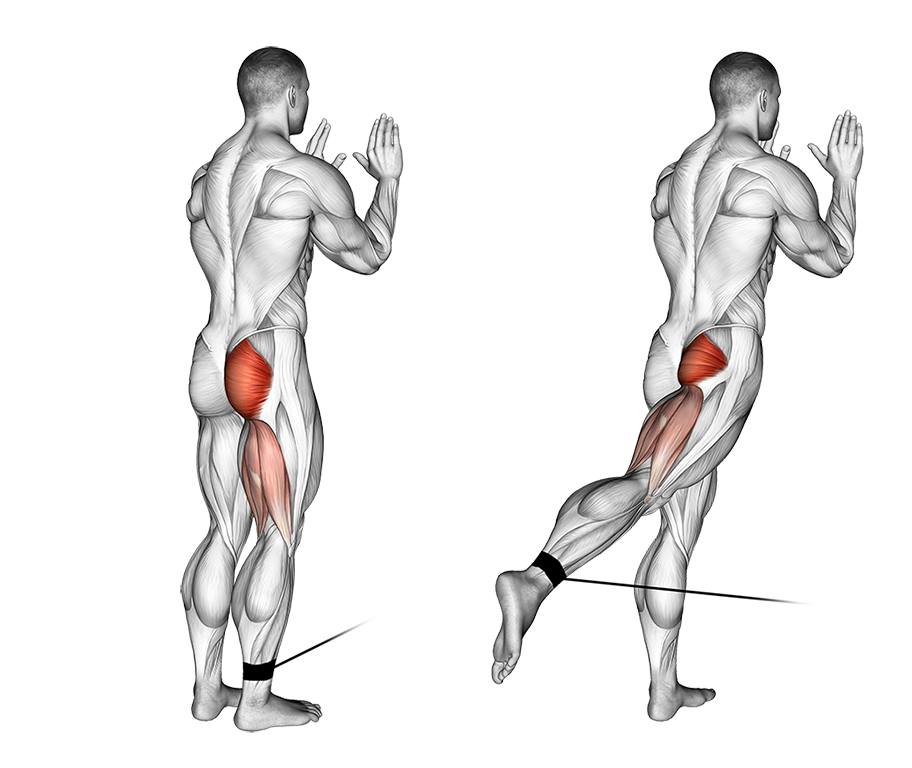
- Difficulty: Beginner
- Target muscles: Glutes, hamstrings
- Equipment needed: Cable machine
- Sets: 3-4
- Reps: 8-12
- Rest: 60 seconds
Benefits: This exercise isolates and shapes the glutes. It can also add volume and strength to the glutes, as well as being a great finisher at the end of your routine. Light weights and high reps to avoid strain.
Instructions:
- Attach a leather ankle cuff from a cable pulley machine to your ankle.
- Stand a metre or so away from the machine, feet shoulder width apart; hold the machine frame with your hands for stability throughout the exercise.
- Keeping your back straight and your core tight, exhale as you use your glutes to pull your leg back in an arc as far as it can go.
- Return your leg slowly to its original position.
- Repeat for the desired number of reps and sets.
Pro Tip: Use the frame of the pulley machine and your core muscles to keep your torso stable. You can also do this exercise using rubber bands.
7. Machine Hamstring Curls
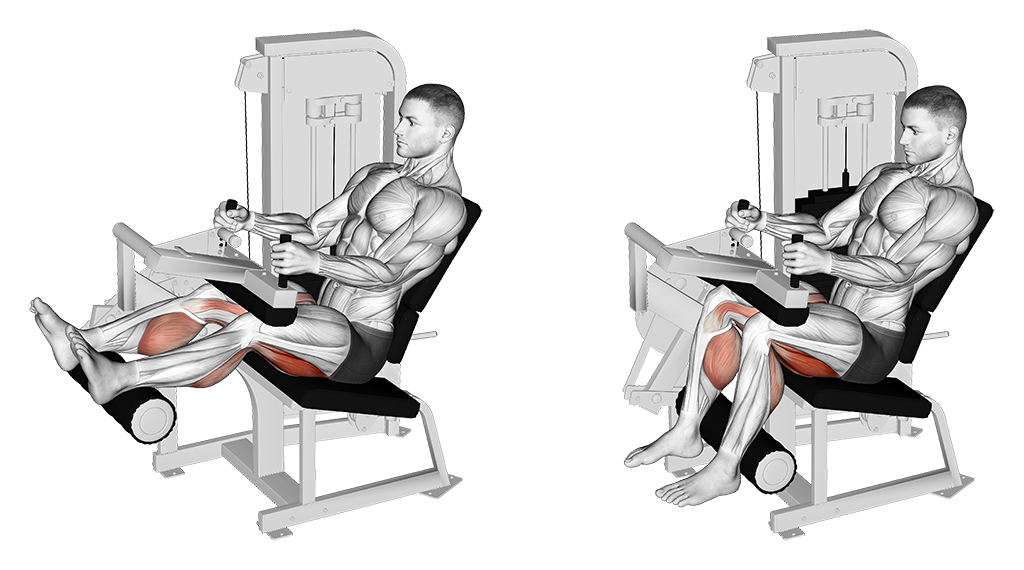
- Difficulty: Beginner
- Target muscles: Hamstrings, calves
- Equipment needed: Hamstring curl machine
- Sets: 3-4
- Reps: 12-15
- Rest: 60 seconds
Benefits: The hamstring curl — also known as the leg curl — allows you to isolate the hamstring muscles separately without putting unnecessary strain on your knees, hips, or lower back. It’s important to work the hamstrings because they make up the second half of your upper leg, the first being the quads. For balanced upper leg development, you need both halves to be equally strong.
Instructions:
This machine exercise can be done in a standing or seated position, or even lying face down. Here’s how to do this exercise in a seated position:
- Before you perform the exercise, align the machine’s seat, back support, and point of rotation with your body; a comfortable fit will avoid injury.
- Rest your heels on the padded moving arm and place the upper pad on your thighs, just above your knees.
- Exhale as you pull your lower legs inwards toward your thighs, you’ll feel your hamstrings stretch at this point.
- When you reach the maximum rotation, hold the position for 2 to 3 seconds, and exhale as you slowly return your lower legs to the original starting point.
Pro Tip: As you lift the resistance weights off the stack when you rotate, ensure they remain off the stack to give your hamstrings stable tension.
8. Leg Press
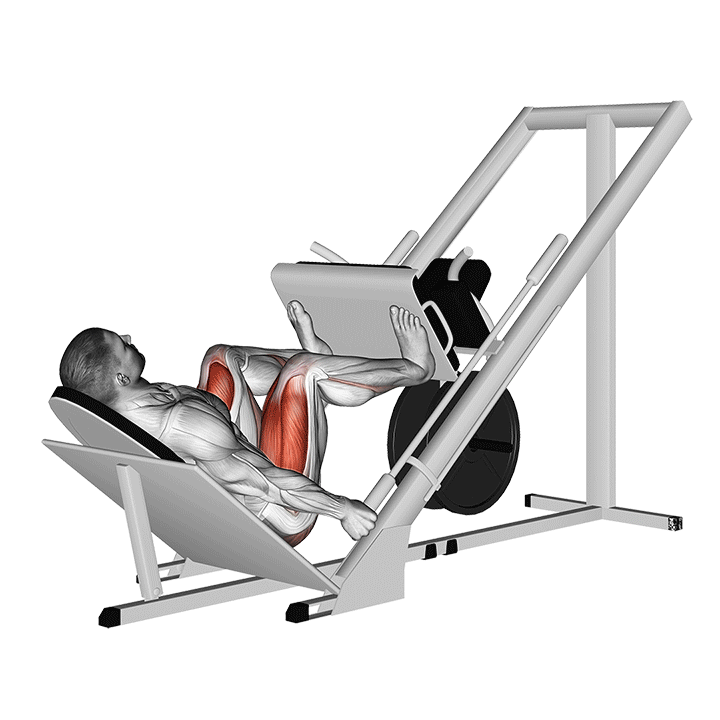
- Difficulty: Intermediate
- Target muscles: Glutes, quads, hamstrings
- Equipment needed: Leg press machine
- Sets: 4-6
- Reps: 10-12
- Rest: 60 seconds
Benefits: The leg press is like an inverted squat that isolates your quad while removing the need to use your lower back. Sitting in a low chair, you “push” weights upward to give your quads a good burn with a full range of motion. The freedom to use an entire range of weights will maximise muscle growth.
Instructions:
- Before you use the machine, make sure to adjust the seat for comfort and safety.
- Place the desired weights on the rack.
- Sit in the seat and place your feet on the board.
- Once you’re seated comfortably, release the safety.
- As the weight pushes against your legs, bend your knees toward the chest until your upper and lower legs are at a 90-degree angle.
- Push back up.
Pro Tip: The start and end points of this exercise are extremely important. Avoid extending your legs fully to avoid pressure on your lower back. Avoid bending your knees too much. Also, if you’re using heavy weights, it’s never a good idea to lock your knees when they are fully extended.
9. Romanian Deadlift
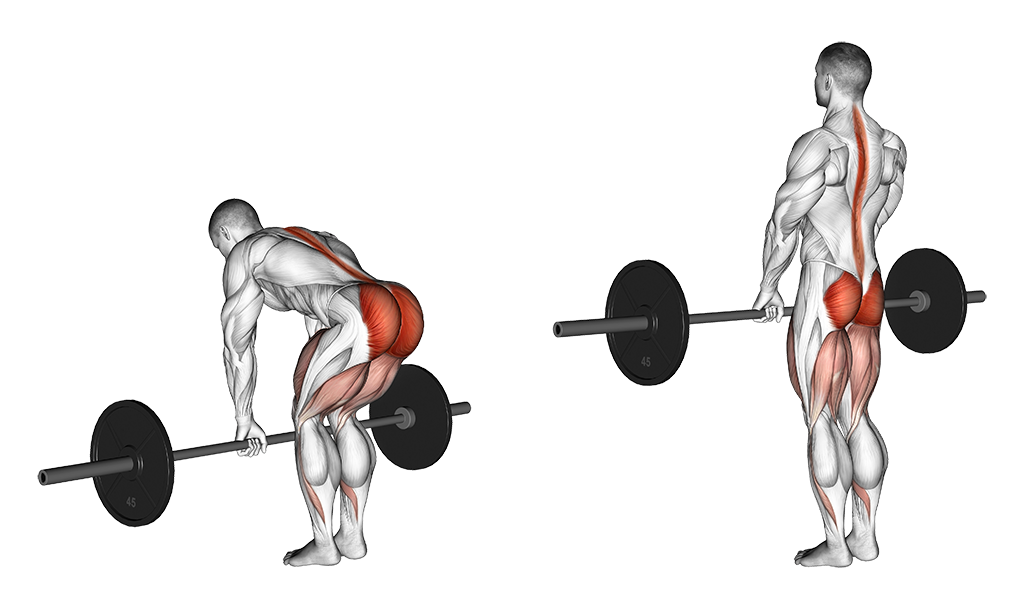
- Difficulty: Intermediate
- Target muscles: Glutes, quads, hamstrings, erector spinae
- Equipment needed: Barbell
- Sets: 3-4
- Reps: 8-12
- Rest: 60 seconds
Benefits: Another brutal muscle builder from Eastern Europe, the Romanian deadlift is a variation on the classic deadlift that targets your hamstrings, forcing them to grow. In addition to the hamstrings, the Romanian deadlift also works your calves, glutes, lower back, and shoulders.
Instructions:
- Stand with your back straight, feet shoulder-width apart, holding a barbell with the desired weight in your hands.
- Exhale as you slowly lower the weight, bending your knees very slightly while keeping your back straight until you feel your hamstrings stretch.
- Lower the weight slightly below your knees until you feel the burn in your hamstrings.
- Return to the standing position.
Pro Tip: The secret to a good Romanian Deadlift is to keep your back straight and allow only the slightest bend in your knees. Some people do Romanian deadlifts without bending their knees at all, but we don’t recommend this for beginners and intermediate operators as it increases the chances of injury.
10. Machine Leg Extensions
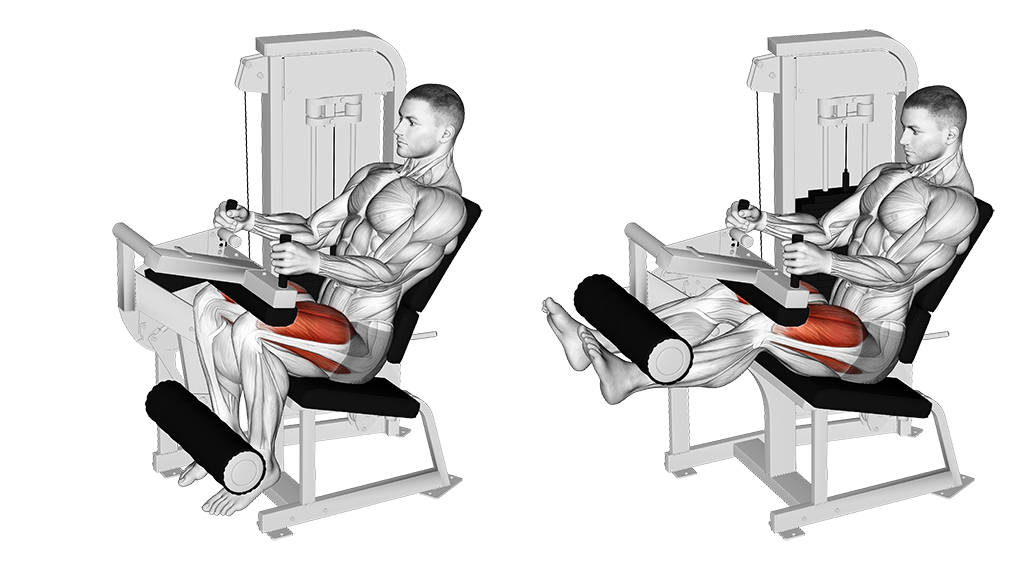
- Difficulty: Beginner
- Target muscles: Quads
- Equipment needed: Leg extension machine
- Sets: 3-4
- Reps: 8-12
- Rest: 60 seconds
Benefits: The machine leg extension isolates your quads, forcing them to pop out and rip through your trouser seams (not really). It’s also a great exercise to add definition to your thighs, helping develop those striations and separations that bodybuilders such as the Quadfather himself Tom Platz, Dorian Yates, and to an extent, Ronnie Coleman were known for. The machine leg extension will keep your lower back safe. It can, however, strain your knees.
Instructions:
- Set the desired weight on the machine.
- Adjust the leg extension machine so that the rotating pad sits on top of the lower end of your shin.
- With your knees at a 90-degree starting point, exhale as you push the rotating arm upward until your legs are almost fully extended.
- Hold the max position for 2 seconds.
- Inhale as you lower the weight back to the starting position.
11. Good Mornings
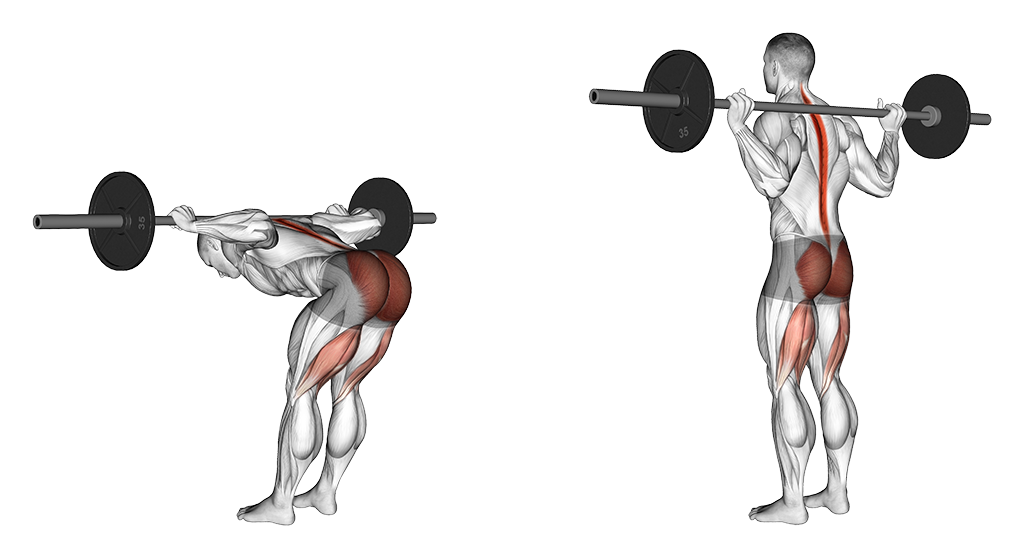
- Difficulty: Intermediate
- Target muscles: Glutes, hamstrings, erector spinae
- Equipment needed: Leg extension machine
- Sets: 3-4
- Reps: 10-15
- Rest: 60 seconds
Benefits: Good mornings build up strength in your legs from the hamstrings up to the glutes, and to the major muscles of the back. This exercise is a great finisher after a heavy leg routine. Make sure you don’t go too heavy on the weights with this one. Good mornings are as such due to how they resemble the little bow people used to take when they wished you a good morning. Although they probably wouldn’t have carried a loaded barbell on their shoulders back then.
Instructions:
- Stand with your feet shoulder-width apart and knees slightly bent.
- Hold a barbell on your upper back, near the shoulders; do not place any additional weights if you’re just beginning this exercise.
- Exhale as you lean forward, rotating the hips until your torso is parallel with the floor.
- Inhale as you return to the starting position.
Pro Tip: Posture. Posture. Posture. As the hips rotate, your back should remain as straight as it is in the standing position. Don’t arch your back. Ever
12. Bodyweight Calf Raises
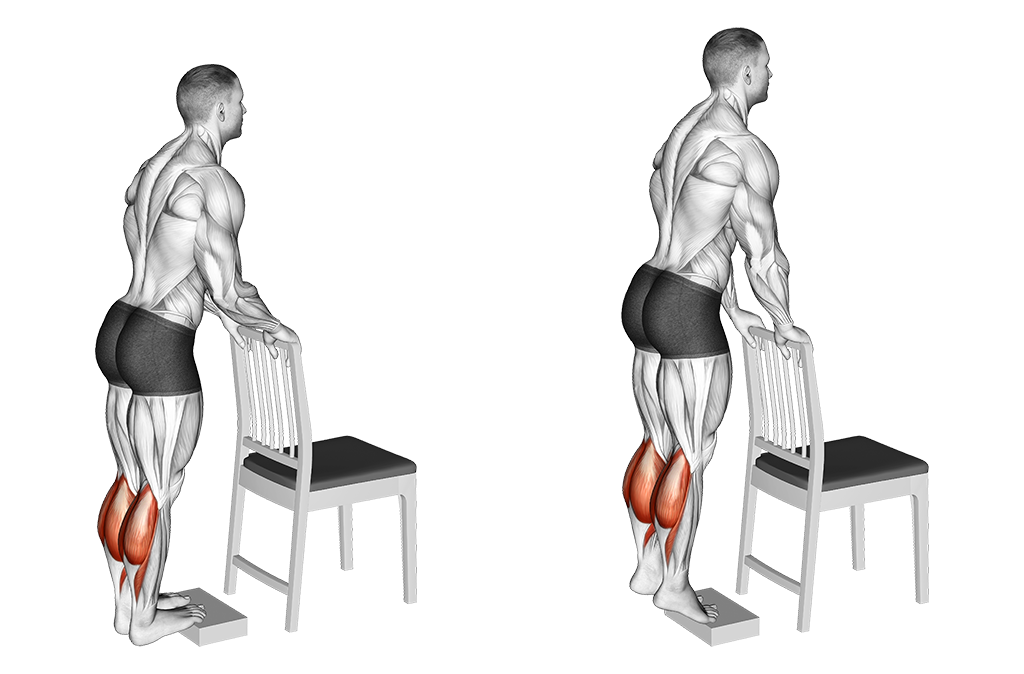
- Difficulty: Beginner
- Target muscles: Calves
- Equipment needed: Leg extension machine
- Sets: 3-4
- Reps: 10-15
- Rest: 60 seconds
Benefits: This exercise builds up the calves and gives them a good burn. It has the added benefit of being very safe as it doesn’t involve weights, nor does it strain the knees or other joints. Calves are crucial to knee health as they support the knee from below. Which is why it’s important to train them during your leg workout sessions.
Instructions:
- Stand up straight with your core tight on the edge of a stand or elevated platform you’ve chosen to perform the exercise on.
- If you don’t have something to hold onto for support, keep your hands by your side.
- Lower your heels a few centimetres below the edge, which will be your starting point for the exercise.
- Raise your heels by pushing with the balls of your feet.
- Raise your body until you are standing on your toes.
- Hold the posture for 2-3 seconds and slowly return to the starting position.
13. Goblet Squat
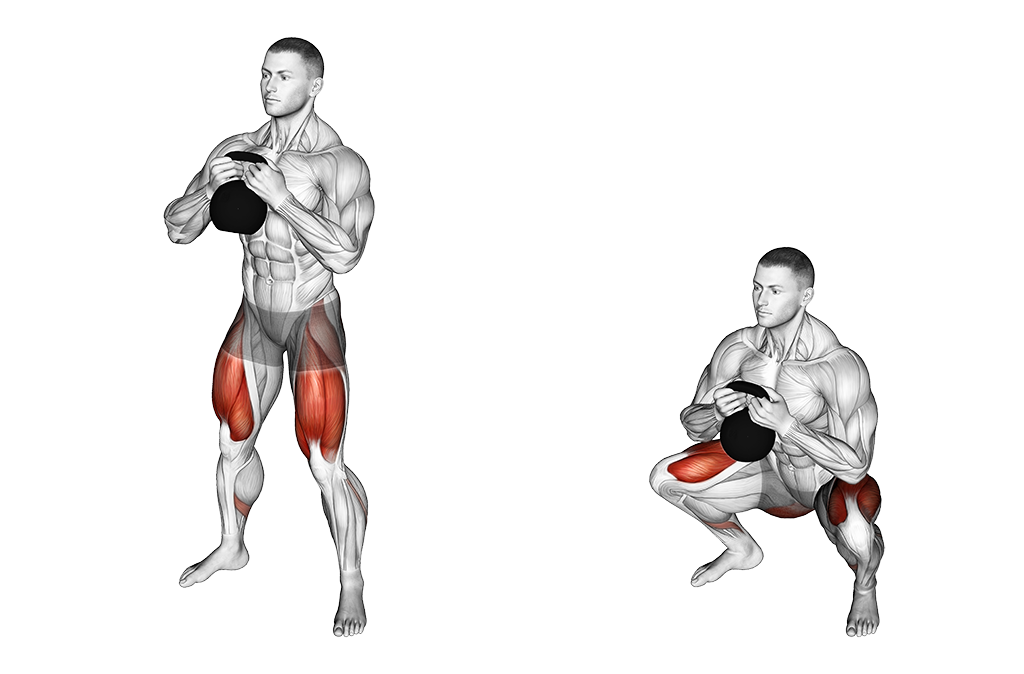
- Difficulty: Beginner
- Target muscles: Glutes, quads
- Equipment needed: Leg extension machine
- Sets: 4-5
- Reps: 8-12
- Rest: 60 seconds
Benefits: This squat involves using a kettlebell or a dumbbell and squatting deep and wide. It targets a large group of muscles, including the glutes, hamstrings, calves, and core. The depth of the squat will help you build up your quads, while the weight you hold will activate your core.
Instructions:
- Hold a kettlebell against your chest with both feet flat on the ground.
- Inhale as you squat by bending your knees, and lowering your torso without lifting your toes off the ground.
- At the bottom of the squat, your elbows should touch your knees.
- Exhale as you return to the starting position.
Pro Tip: The key to doing this exercise well is balance. Hold the kettlebell over your chest, centre of gravity with proper posture, and enter and exit the squat in a smooth motion. Also, make sure the weight is not too heavy for you.
14. Walking Lunges

- Difficulty: Beginner
- Target muscles: Glutes, quads, hamstrings, calves
- Equipment needed: Leg extension machine
- Sets: 4-6
- Reps: 15-20
- Rest: 60 seconds
Benefits: For best results, aim for a maximum range of motion and good posture with your back straight throughout. A short step will work the quads, while a longer step will target the glutes. A walking lunge involves moving from a standing to a kneeling position one leg at a time. It can be done using your body weight or any additional weight you prefer. This is a great warm-up or cool-down exercise for your leg routine.
Instructions:
- Stand with your feet at the hips’ width.
- Keep your torso upright and your core activated.
- Take a step forward with one leg while maintaining your posture.
- Keep your hands in a comfortable position, preferably bent and resting on your hips.
- Inhale as you bend your knees and lower the back leg toward the floor (do not touch the floor with the back knee).
- Hold the bottom position, knees bent, for 2-3 seconds, then climb back up to the starting position
- Switch legs and repeat.
Pro tip: For a complete body workout, perform walking lunges while holding a pair of dumbbells in each hand. This will involve your shoulder and forearm muscles, in addition to your legs. For more on working your shoulder and forearm muscles, check out these detailed guides on the best shoulder exercises for men and the best forearm exercises for men.
15. Sitting Calf Raises

- Difficulty: Beginner
- Target muscles: Glutes, quads, hamstrings, calves
- Equipment needed: Leg extension machine
- Sets: 3-4
- Reps: 20-30
- Rest: 60 seconds
Benefits: In this leg workout, as previously mentioned, you’ll be carrying a weight on your knees from a seated position, and using your calves to raise and lower it for a good burn. Like the standing calf raises, this exercise targets the calves. The key difference is it’s done in a seated position (either with a free weight on the knees or with a gym machine).
Instructions:
- Sit upright in a chair or on a bench with your feet shoulder-width apart.
- Move your feet back toward your body until they are slightly behind your knees.
- Place the weight on your knees and use your calves to raise it as high as you comfortably can.
- Hold the position for 2-3 seconds and slowly bring your heels back to the starting position.
Final Thoughts
Building a body takes effort, consistency, and patience. The exercises outlined in this list will help you develop strong, muscular legs you’ll be proud to flaunt. Of course, don’t expect to see results unless you’re willing to stick it out and go the distance. Building muscle is a marathon, not a sprint.
For a physique that looks balanced and symmetrical, you’ll need to build your upper body too (5). Have a look at these great tricep exercises for men for a detailed guide on how to go about building out your arms to go with your quads.
And for that real beach-ready summer bod, you’ll need a shimmering six-pack of abs. These abs exercises for men are a great place to get you started on your way.
We’ve curated these exercise lists to be performed at home or the gym. However, we advise that you always train under expert supervision and in a well-equipped gym whenever you can.
Citations
- Selective contribution of each hamstring muscle to anterior cruciate ligament protection and tibiofemoral joint stability in leg-extension exercise: a simulation study, European Journal of Applied Physiology, 13 May 2013.
- Warm-Up and Stretching in the Prevention of Muscular Injury, Sports Medicine – Springer, 2 October 2022.
- Never skip leg day: A novel wearable approach to monitoring gym leg exercises, IEEE Explore, 14-19 March 2016.
- Soviet Training Methods, Strength & Conditional Journal, April 1987.
- Symmetry: Why It Is Important and How To Achieve It, Bodybuilding.com, 7 March 2020.
- Endocrine response to high intensity barbell squats performed with constant movement tempo and variable training volume, National Centre for Biotechnology Information, October 2018.
The Boss Hunting Fitness Reviewer — Jono Castano, Certificate IV in Fitness, Precision Nutrition Level 1
Jono Castano is a Sydney-based celebrity personal trainer and certified nutrition coach who specialises in fitness, training, workouts and diet plans. He is the co-founder of the popular Acero fitness brand and fitness app and has become well-known for his extensive work with noted figures like Rebel Wilson, Jessica Mauboy, Lincoln Lewis, Joel Creasy, and The Veronicas.
Jono has built a large social media following with over 800,000 subscribers on Instagram. He has also been profiled by publications such as Men’s Health and has become one of the most recognisable fitness instructors in Australia.
- Location: Sydney, Australia
- Credentials: Certificate IV in Fitness, Precision Nutrition Level 1
- Expertise: Fitness, Training, Personal Training, Workouts, Diet Plan
Editor’s Note: The fitness content on Boss Hunting is informative in nature, but it should not be taken as medical or professional fitness advice. When starting a new training regimen and/or diet, consulting with a trusted medical professional or trainer is always a good idea.
Did you enjoy this article on the best shoulder exercises? Check out a few of Boss Hunting’s other workout guides below:
- The 15 Best Ab Workout Exercises
- The 12 Best Shoulder Exercises For Improved Strength & Size
- The 15 Best Exercises For The Perfect Leg Workout
- The 16 Best Chest Exercises & Workouts For Men
- How To Bench Press [A 101 Guide For The Average Bloke]
- The 21 Best Rear Delt Exercises For Boulder Shoulders
- The 11 Best Tricep Exercises For Improved Strength & Size
- The 15 Best Bicep Exercises & Workouts For Men
- The 9 Best Lat Exercises For When Size Is The Prize
- The 16 Best Oblique Exercises & Workouts For Men
- The 13 Best Trap Exercises & Workouts For Men
- The 10 Best Forearm Exercises & Workouts For Men
- 5 First Time Marathon Tips From Olympic Runner Brett Robinson
- The 25 Best Dumbbell Exercises & Workouts You Don’t Need A Gym For
- Why The 75 Hard Challenge Can Work For You
For more information to consider about diet, nutrition and, fitness equipment, check out below:
- Does Intermittent Fasting Actually Work? We Tested It Out
- How To Lose Weight Fast: 10 Simple Tips To Shed Fat More Efficiently
- The 7 Best Massage Guns You Can Buy In Australia
- The 13 Best Exercise Bikes To Stay Fit This Winter
- The 22 Best Mountain Bikes Money Can Buy Right Now
- The 16 Best Electric Bikes In Australia
- 8 Best Tennis Shoes for Men in Australia
For some celebrity inspiration, check out our celebrity workout guides right here:
- Henry Cavill’s Workout Routine Will Unleash Your Inner Superman
- The Workout That’ll Get You ‘Gladiator 2’ Ripped Like Paul Mescal
- The Chris Hemsworth Workout & Diet Plan Is Inhuman
- Jake Gyllenhaal’s Workout & Diet Plan To Get ‘Road House’ Ripped
- How Jeremy Allen White Got Calvin Klein Model-Jacked
- Joe Rogan’s Workout & Diet Plan Isn’t For The Faint-Hearted
- How Hugh Jackman Trained For His MCU Return In ‘Deadpool & Wolverine’
- Daniel Craig’s Military-Inspired Workout For ‘No Time To Die’
- How Michael Jordan’s Personal Trainer Helped Him Achieve GOAT Status
- The Bruce Lee Workout That Made His Rig Famous
- The Rock’s Intense Workout For ‘Hobbs & Shaw’ Will Bring You To Your Knees
For the best places to improve your health and fitness, check out our recommendations here:
